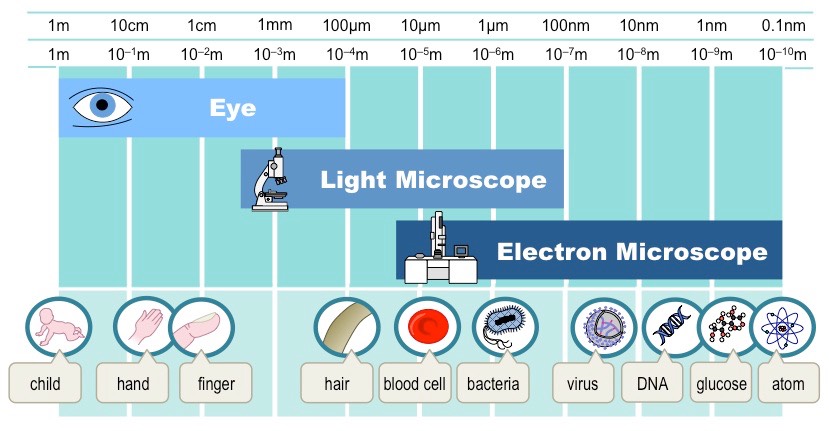In order to prompt discussion about the relative size of objects and the different tools we use to measure objects, we have a mini-lesson we can engage students in prior to work with light or electron microscopes.
Students are given laminated and labeled cards with different objects on them - from bees to atoms, from bicycles to jet engines, and many things in between.
While students work, they can be asked:
- Which of these objects have you seen in real life before?
- What evidence do you have that this object is smaller/larger than this one?
What kind(s) of tool(s) could be used to measure the object?

Once each group has their best guess in order, we go over the answers together. Then we discuss:
- Which objects were easy to decide between?
- Which objects were difficult to decide between, and what made these difficult?
- What tools would be helpful to figure out the relative size of these objects?
Students will see that their ruler, yardstick, or meter stick is helpful in some scenarios, but other more specialized tools are necessary to measure very small or very large items. That's where microscopy comes into play! We can then lead the discussion into light and electron microscopy and talk about the merits of these tools.
